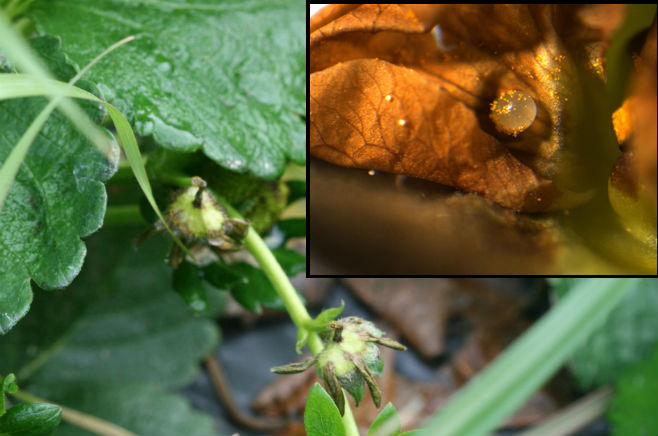Jan 3, 2017NCSU researchers study strawberry clipper effects on yield
During 2016, our laboratory completed a three year project tracking the occurrence and impact of strawberry clipper weevil in annual, plasticuture strawberry fields. Our results have recently been published, and we would like to share them with strawberry growers and extension agents.
Strawberry clippers injure plant when female lay their eggs into developing flower buds and then “clip” the pedicle (“stem”), causing it to die. These buds cannot develop into flowers and fruit.
We had three main questions about strawberry clipper in annual strawberries:
1. We know that many matted row strawberry varieties compensate for clipper injury by producing either more berries or bigger berries on remaining buds. Are varieties grown in annual plasticulture able to compensate for clipper injury?
2. How common is clipper damage?
3. If strawberry clipper damage does reduce yield, what tools do we have available to control weevils without causing additional problems?
The results of an experiment designed to answer the first question have just been published in the Journal of Economic Entomology. We selected five varieties commonly grown on southeastern strawberry farms, Albion, Benecia, Camarosa, Chandler, and Sweet Charlie. We then removed either all the primary flower buds, secondary flower buds, and tertiary flower buds from plants starting at the time when we observed strawberry clipper injury on commercial farms and ending when harvest began, which is when we stopped injury on farms. Clipper activity on farms occurred most commonly when secondary buds were developing.
Strawberry clipper weevil does not reduce total yield of plasticulture varieties
Our complete methods and results are available in the Journal of Economic Entomology, but the bottom line is that there was no difference in total yield for any of the varieties, regardless of the timing of bud removal or the number of buds removed. We removed up 18 buds per plant in Chandler plots! There was a significant difference in weekly yield between bud removal treatments and the control, where no buds were removed.
How important are strawberry clipper affects on harvest timing?
All varieties except Albion (a “day neutral” variety which had very low overall yield in our experiment) shifted fruit ripening by a week or two, sometimes increasing weekly yield and sometimes decreasing weekly yield. Harvest window is important to North Carolina growers, many of whom are you-pick farms and often try to target holidays such as Mother’s Day. However, many factors other than strawberry clipper also influence harvest timing, including planting date, winter temperature, fertility, and spring weather. Even if all factors line up for a bumper a crop on target weekends, rain or other variables may keep pickers away. Therefore, we think it is more important to focus on total yield when considering whether to treat strawberry clipper.
New management recommendations
Based on these findings, we have updated our recommendations for strawberry clipper in plasticulture strawberries. We now recommend that growers do not treat unless damage exceeds 18 buds per plant. Because we did not observe higher rates of bud removal, we cannot infer what their potential effects would be on yield. We occasionally observed higher rates of bud removal at some of the commercial farms we monitored.
— Hannah Burrack, North Carolina State University
Source: North Carolina State University Extension















